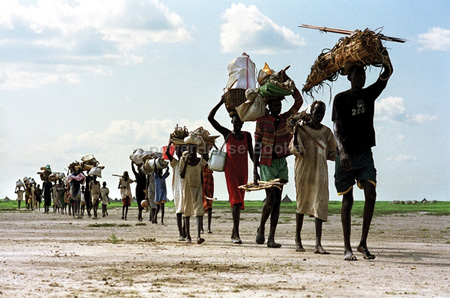

This first civil war was fought by southern insurgents, known as the Anya-Nya, against the Sudan army until a peace agreement was signed in Addis Ababa in 1972 creating the autonomous Southern Regional Government. The current crisis in Darfur has generated more commentary, reports, and media coverage than the 50 years of a much bloodier civil war in the southern Sudan which began after the mutiny of the southern Equatorial Corps at Torit in August 1955, six months before independence on 1 January 1956. The theme of the play remains the same, but this act, the most bloody to be sure, must be understood by the international community as another episode in the continuing struggle for control of the most strategic regions of the Chad basin, Darfur. In this 40 years'war the current crisis in Darfur is yet another act in a Shakespearean tragedy about the long road to disaster in Darfur. Moreover, since 1969 Darfur has been the strategic battleground in the much larger conflict begun by Muammar Qadhafi of Libya in 1969 to establish an Arab, Islamic Sudanic Libyan Empire south of the Sahara. This juxtaposition of the center versus the periphery is central to any understanding of the history of Sudan of which the disaster in Darfur is the most recent manifestation. This racial hostility was compounded by the cultural discrimination between the rustic, illiterate Baqqara Arabs of Darfur, commonly known as the awlad al-gharib (westerners) and the more sophisticated literate riverine Arabs of the towns located in the heartland of the Sudan along the river Nile, the Awlad al-Bahr (people of the river). Historically, there has been a long record of conflict between the African Fur and Masalit and the Arabs of Darfur, particularly the Baqqara. This article is to demonstrate that the current crisis in Darfur is not a spontaneous insurgency at the beginning of the twenty-first century but the culmination of neglect, religion, and racism since the end of the nineteenth century.


 0 kommentar(er)
0 kommentar(er)
